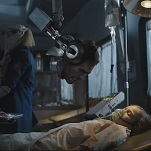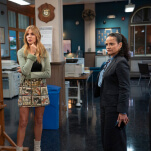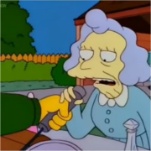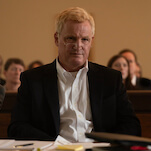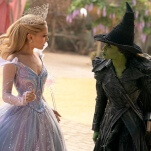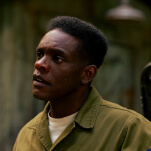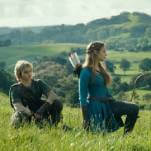It’s fortunate that both versions of Patricia’s life are eventful, as virtually all of My Real Children is devoted to tracking them. Born in 1926 England, Patricia heads to university in Oxford during World War II, and meets a philosophy-obsessed English student named Mark, who almost instantly proposes. Walton piles up the warning signs about him, but Patricia is emotionally and sexually naïve, and all too willing to believe she’s building a romance for the ages. Then, after a personal setback, he turns their long-distance, long-term, largely theoretical engagement into a now-or-never ultimatum. Patricia has two options, and Walton allows her to make both, marrying Mark in one timeline, and entering a long-term, legally forbidden lesbian romance in the other. For reasons that are never explained—and are fundamentally irrelevant to the story anyway—she remembers both results.
From that point on, the book is startlingly like a smooth-flowing, pared-down version of Kate Atkinson’s recent Life After Life, in which a woman named Ursula lives through the same life over and over, each time avoiding her previous fate, and surviving longer. The two books have different structures, but they cover some of the same time period in England, and feature similar developments, both broad—a significant beach trip, a brother dead in the war, the Blitz, the misery of post-war shortages—and specific. In particular, Patricia and Mark’s disastrous marriage closely parallels Ursula and Derek’s disastrous marriage in Atkinson’s novel. Patricia and Ursula have so many family members with similar personalities and storylines that they could easily be relatives in one big sprawling, many-universed family. Both books draw heavily on the idea that certain key decisions are crucial, but that most of life zips by in less dramatic moments. And both books use a fantasy device as a fulcrum, then don’t much concern themselves with it once the heavy lifting is done.
But where Atkinson wrote a sprawling epic, Walton’s novel is cozy and personal, with an unfussy concision. At times, it resembles a Christmas-card letter from an accomplished family: a highlights reel summing up relationship steps, children, vacations, family, schools graduated, projects completed, grandchildren, and eventually, deaths. Walton’s 2011 novel, Among Others, which won science fiction’s top honors, the Hugo and Nebula, has a similarly homey bluntness and lack of adornment. Yet both books are unsatisfying in the same way: There’s a constant sense of a significant, barely glimpsed story and larger perspectives all left aside in favor of quotidian detail, and the ending feels rushed after the leisurely stroll to get there. Both books are also satisfying in the same way, both in the absorbing qualities of such a simple style of storytelling, and in the richness of the characters and the fundamental idea.
As with Life After Life, the straightforward, declarative style masks a deep well of emotion, as Patricia devotes her two lives to her loves, her hates, her delusions, and her self-education. One of her histories is full of significant and frustrating mistakes, while the other is far more enriching and uplifting, but Walton shows how both trails have their benefits—in Patricia’s life, and beyond it. Like the character herself, readers get to have it both ways: all the messy passion of Patricia’s life, and all the tidy, thoughtful remove Walton brings to it. Although Patricia has to make choices in the end as in the beginning, My Real Children feels to some degree like having a cake and eating it too.



